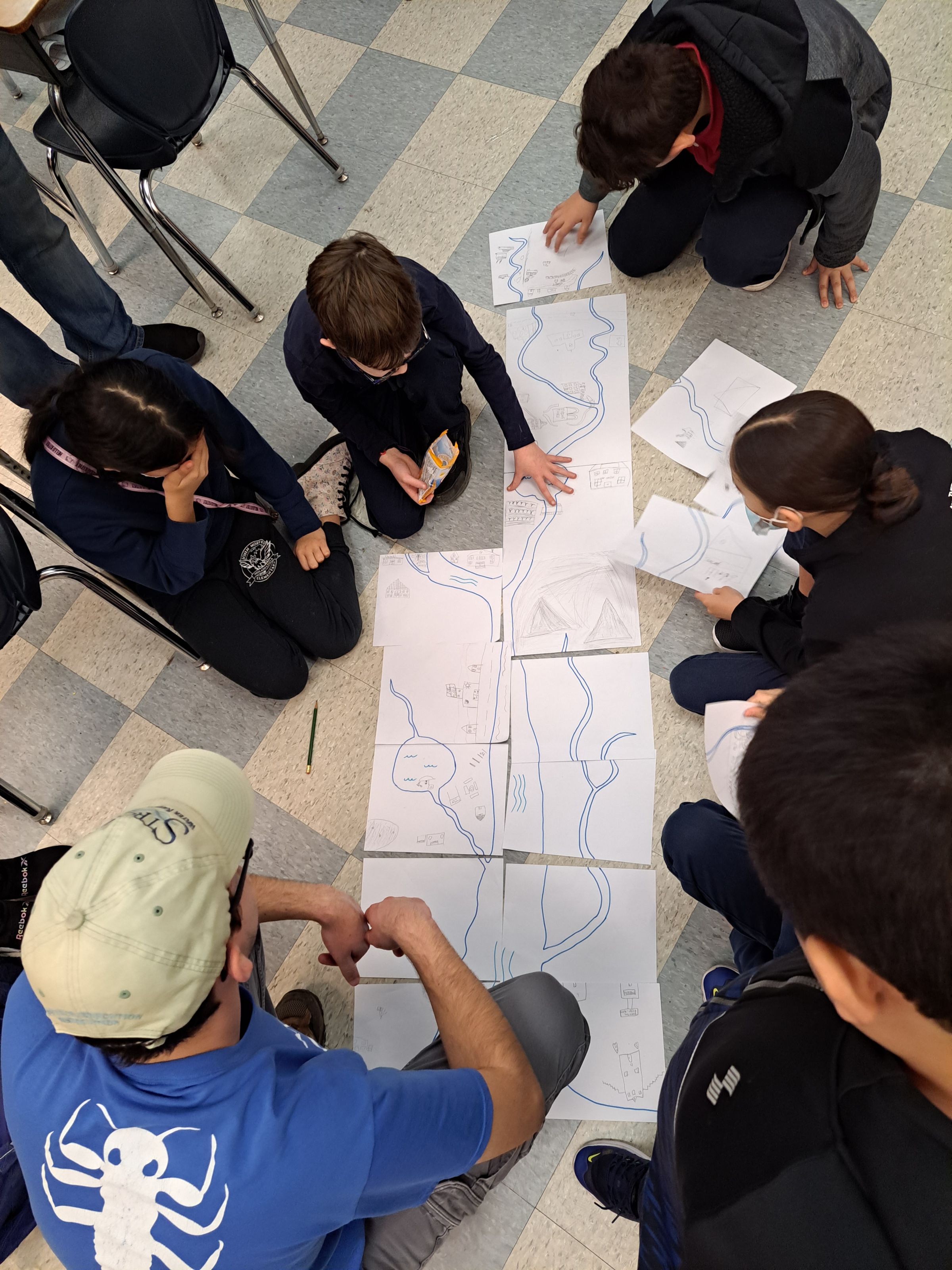Hands-On Watershed Education

This blog post was written by Kathryn Difo, education program manager at the Stroud Water Research Center.
Over the past few months, a team of educators from Stroud Water Research Center (Stroud Center) has been sharing watershed lessons and activities with elementary school students from two different 21st Century Community Learning Center (CCLC) sites. From sharing Project Wet games like Macroinvertebrate Mayhem to leading the Stroud Center’s own educational activities like measuring rainwater infiltration, our students have been exploring stream health and watershed dynamics using the Meaningful Watershed Educational Experiences (MWEE) framework from the National Oceanic and Atmospheric Administration Bay Watershed Education and Training program for studying local environmental issues. The Stroud Center’s Education Department (created in 1992) interprets the research of our freshwater scientists and restoration staff to include current, real-world scientific findings and procedures in our education and outreach programs. Our goal is for people to become knowledgeable, responsible stewards of freshwater resources through participation in our education programs and exposure to outreach efforts. We are weaving this goal into after-school programming led in partnership with 21st CCLC sites in Avondale and West Chester, Pennsylvania.
Stroud Center programming addresses all elements of a MWEE but focuses on Outdoor Field Experiences. Even in the winter months, we still managed to get students outdoors to explore their school grounds, do some nature journaling, and learn about the role of trees in watershed health. Students loved being outside and engaging with these new topics in fun ways. In one newly created Stroud Center lesson, students explore the benefits of trees by matching everyday household items with cards that describe a function of trees: ‘Trees provide shade to keep streams cool’ matches with an ice-cube tray, ‘trees help soak up water to reduce runoff’ matches with a sponge, and so on. Hands-on activities keep our students interested, active, and learning with multiple senses. When it got really cold, we were not deterred by “bad” weather but instead brought the outdoors into the classroom. Students got to partake in a macroinvertebrate study, observing live macroinvertebrates, identifying them, and learning why they are important to stream ecosystems and the scientists who study them. Our lessons align with the new Pennsylvania state Science, Technology, Engineering, Environmental Literacy, and Sustainability (STEELS) standards so that extracurricular learning will support classroom learning.

Students excitedly identify live aquatic macroinvertebrates during a lesson on stream health and bioindicators. Photo credit: Kathryn Difo

Students learn the importance of land use on stream health as they put together a watershed puzzle. Photo credit: Kathryn Difo
Being a part of the eeBLUE 21st CCLC Watershed STEM Education Partnership Grant Program has afforded us the opportunity to translate more of our lessons into Spanish because the majority of our students are multilingual learners. West Chester and especially Avondale serve many multilingual students who are at different stages of learning English. After-school programs are a great way for students to practice their English, and it is equally as important to our educators that we do not lose the attention and participation of students for whom English is still a challenge. The Stroud Center has hired bilingual educators specifically to serve Spanish-speaking students and their families, and it has been a joy to see students’ faces light up when one of our educators starts speaking Spanish. We have found interest to skyrocket when kids are feeling seen and supported. They are more engaged with reading materials when presented in both English and Spanish. Language is no longer a barrier for entry to science—instead of focusing on understanding the words, students can focus on the science topics at hand. Some of the 21st CCLC teachers are also bilingual and have been a huge help in interpreting for some of our English-speaking educators and offering classroom support. We are excited to continue outdoor science programming with summer program students in July!
NAAEE, in collaboration with NOAA and supported by the U.S. Department of Education, is working with twelve environmental education organizations to offer engaging after-school watershed-focused STEM (science, technology, engineering, and mathematics) programs. The eeBLUE 21st Century Community Learning Centers Watershed STEM Education Partnership Grants, administered by NAAEE and running from 2024–2025, support environmental education organizations collaborating directly with 21st CCLC sites. These sites play a crucial role in designing and implementing locally relevant, out-of-school-time programs that develop students' environmental literacy and leadership skills as they improve their communities. These grants support programming for local Nita M. Lowey 21st Century Community Learning Centers (21st CCLC) sites and their students, many of whom live in underserved areas. The 12 selected projects serve 11 states, ranging from Hawai’i to Maine.





